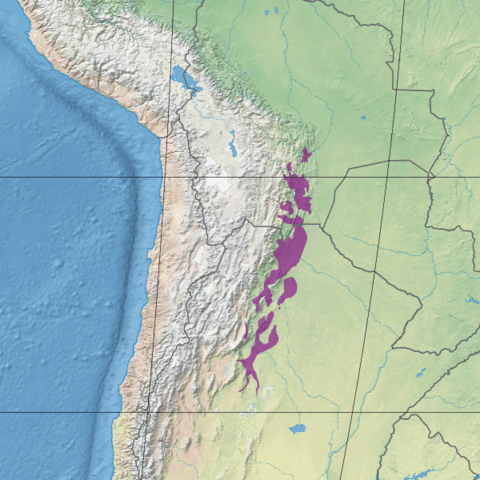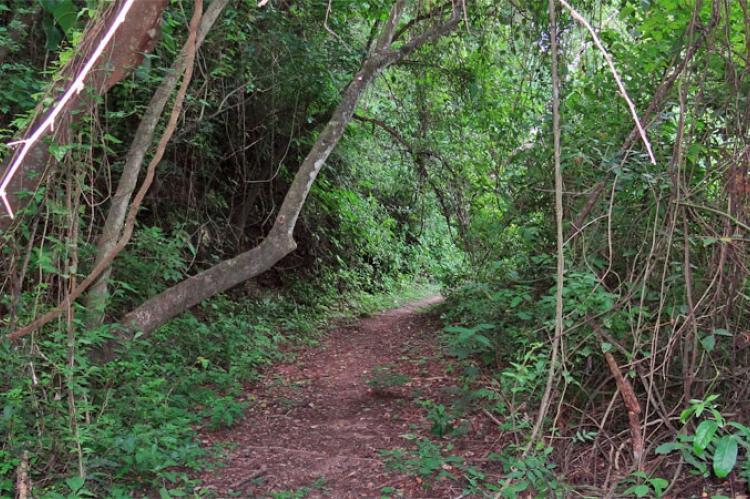The Southern Andean Yungas: A Verdant Oasis in the Andes
The Southern Andean Yungas ecoregion, nestled along the eastern slopes of the Andes, stands as a lush and mesic haven amidst the arid surroundings of southwestern Bolivia and northwestern Argentina. This tropical and subtropical moist broadleaf forest ecoregion offers a unique and biodiverse landscape.
The Southern Andean Yungas: A Verdant Oasis in the Andes
Nestled along the eastern slopes of the Andes mountain range, the Southern Andean Yungas ecoregion stands as a lush and mesic haven amidst the arid surroundings of southwestern Bolivia and northwestern Argentina. This tropical and subtropical moist broadleaf forest ecoregion, part of the larger Yungas ecosystem, spans elevations ranging from 800 to 3,000 meters (2,600 to 9,800 feet), offering a unique and biodiverse landscape.
A Biogeographic Gem
A Relic of Quaternary Glaciations
The Southern Andean Yungas ecoregion is a fascinating remnant of a bygone era, potentially the last of the isolated evergreen forests that persisted through the Quaternary glaciations – a series of alternating glacial and interglacial periods that saw the expansion and contraction of glaciers worldwide. This ecoregion's existence serves as a testament to the resilience of nature and the intricate interplay between geological processes and ecological adaptation.
A Mesic Oasis amidst Arid Landscapes
Bordered loosely to the east by the Chaco ecoregion and tightly interdigitated to the west with the Bolivian Montane Dry Forest, the Southern Andean Yungas ecoregion forms a mesic (moderately moist) habitat, a verdant respite within the drier surroundings of the region. This unique positioning adds to the ecoregion's ecological significance and biodiversity richness.
Climate and Vegetation
A Subtropical Highland Climate
The Southern Andean Yungas ecoregion enjoys a subtropical highland climate, with trade winds bringing an annual rainfall of approximately 2,500 millimeters (98 inches). This ample precipitation supports the region's lush and evergreen forest ecosystem.
A Mesic Evergreen Forest
The Southern Andean Yungas are characterized by a mesic evergreen forest, with trees typically reaching heights of less than 15 meters (49 feet). At elevations between 1,200 and 2,500 meters (3,900 to 8,200 feet), the forest is dominated by the Andean alder (Alnus acuminata) and the mountain pine (Podocarpus parlatorei). These species intermingle with other trees at lower elevations, such as those from the Lauraceae and Myrtaceae families, creating a diverse and vibrant forest tapestry.
Biodiversity Riches
A Tapestry of Life
The Southern Andean Yungas ecoregion is a biodiversity hotspot. It is home to a diverse array of flora and fauna, including many species that find their southern range limits within this unique ecosystem. Mammals such as the white-lipped peccary (Tayassu pecari), collared peccary (Pecari tajacu), and South American tapir (Tapirus terrestris) roam these forests, while felines like the jaguar (Panthera onca), puma (Puma concolor), margay (Leopardus wiedii), and jaguarundi (Puma yagouaroundi) prowl the understory.
Avian Endemism
Like its northern counterpart, the Bolivian Yungas, the Southern Andean Yungas ecoregion boasts a significant number of endemic bird species, with approximately ten species being range-restricted to this area. Notable avian inhabitants include the red-faced guan (Penelope dabbenei), Rothschild's swift (Cypseloides rothschildi), and the rufous-throated dipper (Cinclus schulzi), among others.
Conservation Efforts
Protected Areas and National Parks
Recognizing the ecological importance and vulnerability of the Southern Andean Yungas ecoregion, several national parks and protected areas have been established within its boundaries. In Bolivia, the Tariquía National Reserve safeguards a significant portion of this ecosystem, while in Argentina, areas like Calilegua National Park, Baritú National Park, El Rey National Park, and Potrero de Yala Provincial Park contribute to the conservation efforts.
These protected areas serve as sanctuaries for the region's unique flora and fauna and provide opportunities for research, environmental education, and sustainable eco-tourism initiatives, ensuring the long-term preservation of this remarkable ecoregion.

Map depicting the location of the Southern Andean Yungas (in purple).
